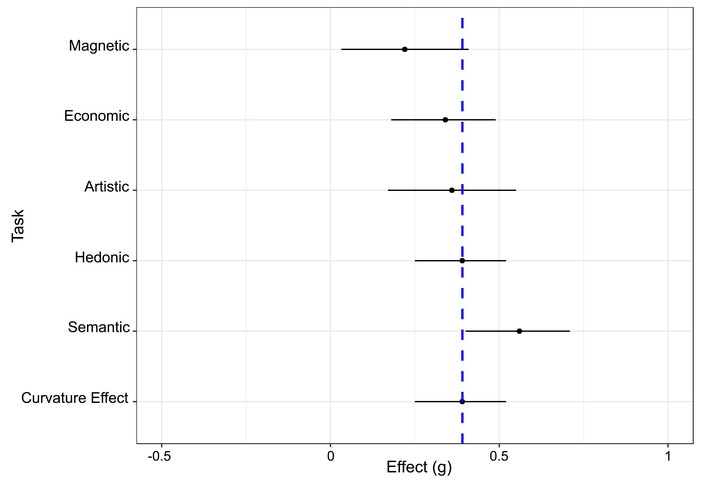
Abstract
Evidence dating back a century shows that humans are sensitive to and exhibit a preference for visual curvature. This effect has been observed in different age groups, human cultures, and primate species, suggesting that a preference for curvature could be universal. At the same time, several studies have found that preference for curvature is modulated by contextual and individual factors, casting doubt on this hypothesis. To resolve these conflicting findings, we conducted a systematic meta-analysis of studies that have investigated the preference for visual curvature. Our meta-analysis included 61 studies which provided 106 independent samples and 309 effect sizes. The results of a three-level random effects model revealed a Hedges’ g of 0.39—consistent with a medium effect size. Further analyses revealed that preference for curvature is moderated by four factors—presentation time, stimulus type, expertise, and task. Together, our results suggest that preference for visual curvature is a reliable but not universal phenomenon and is influenced by factors other than perceptual information.